Dutch ovens are so appealing, what’s not to like? They are available in vivid, lovely colors, can be used for baking bread as well as braising and deep-frying, and can be used from the oven directly to the table.
Numerous recipes call for using a Dutch oven, which is a kitchen workhorse and a common indicator of a serious cook. But what exactly is a French oven? Despite having different names, are a Dutch oven and a French oven the same thing?
Please continue reading for more information.
Table of Contents
What Is A Dutch Oven?
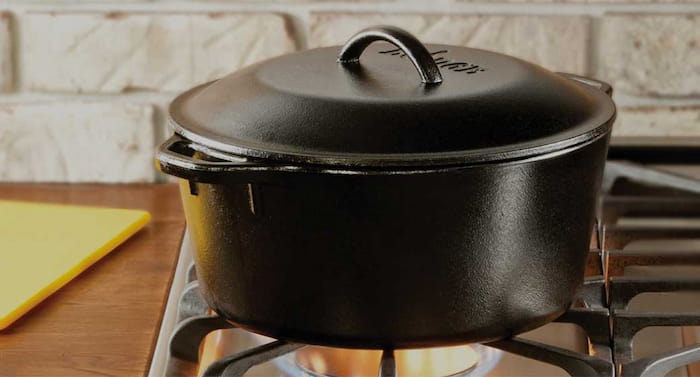
Despite the name, Abraham Darby’s 1707 patent for the Dutch oven was an English invention. He named the invention a “Dutch oven” after observing how craftsmen in Sand was used to mold brass, allowing the Netherlands to produce cookware of exceptional quality. Darby’s Dutch oven, which is the forerunner of the cast iron Dutch ovens we are accustomed to, was molded in iron, a less expensive material, in order to produce a more affordable product.
Today, a cast-iron cooking pot with a flat base, straight walls, and a thick, snug-fitting lid is known as a Dutch oven. Due to these features, Dutch ovens are excellent at capturing condensation during cooking, which reduces cooking time, preserves moisture in food, and enhances flavor. Dutch ovens have become a popular tool for bakers who want to make their own bread.
Dutch ovens that are made of raw cast iron need to be “seasoned” prior to being used in order to improve the stick-resistance of its cooking surface, and protect it from rust. You can cook food in a Dutch oven on the stove, in the oven, or even over a campfire. Dutch ovens are one of the most practical cooking utensils you can own.
What Is A French Oven?
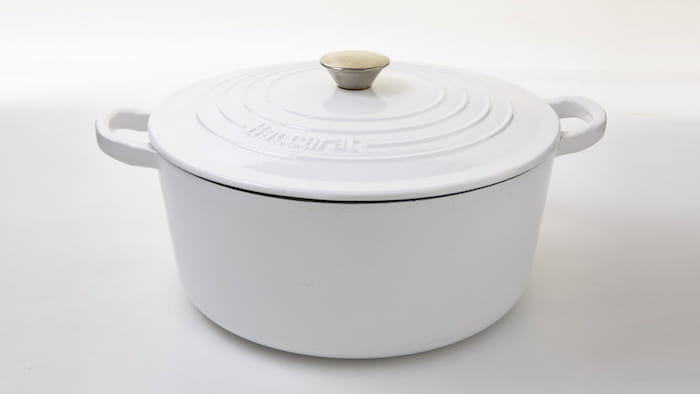
You would be correct if you assumed a French oven from the description of the Dutch oven. A cast iron Dutch oven with a porcelain enamel coating is what a French oven is in essence. Early in the 20th century, the French oven, with its enameled surface, greatly enhanced the performance of the Dutch oven’s already robust and adaptable stick-resistance system. Locally known as a cocotte, the boeuf bourguignon recipe, which called for browning the meat on the stove before transferring the dish to the oven to finish cooking, made ideal use of the French oven at the time.
The enameled coating also eliminates the need for seasoning, making these more recent Dutch ovens easier to maintain and enabling the production of the endlessly practical Dutch oven in a variety of lovely colors. While Dutch ovens are typically circular, modern casting technology allows us to produce them in a variety of shapes, such as oval, square, heart-shaped, and even pumpkin-shaped.
Can You Use A Dutch Oven Instead Of A French Oven?
Typically, when a Dutch oven is called for in a recipe, it refers to a French oven with an enameled interior, but if you have a traditional Dutch oven with a well-seasoned raw cast iron interior in its place, they will both perform the same function and can be used interchangeably.
What Distinguishes A Dutch Oven From A French Oven?
Cast iron is a durable material that is used to create both a cocotte and a Dutch oven. Due to their extreme durability, both Dutch ovens and French ovens are a great choice.
The main difference between the cocotte and Dutch oven is in the coating and the maintenance.
There are some differences in how the two kinds of cast-iron cookware are used, despite the fact that they can generally be used interchangeably.
Cooking With Cast-iron Dutch Ovens
Bare cast-iron cookware requires a seasoning process that the enameled pot does not. To do this, follow these simple steps:
- The cast-iron Dutch oven needs to be thoroughly washed and dried.
- With a paper towel, cover it in a thin layer of mild vegetable oil.
- Set your oven to 375 degrees Fahrenheit.
- For about an hour, bake the cookware.
- After allowing it to cool, store it.
Regularly seasoning your cast-iron Dutch oven will keep it non-stick. Additionally, especially over time, it will impart a wonderful flavor.
Another difference between a Dutch oven and cocotte cookware is that the bare cast-iron pot won’t show imperfections or chip the way the enameled pot will.
A drawback to this type of pot is that it is more challenging to clean, mostly if it’s not seasoned correctly. Never scrub it or apply any kind of soap to it. To remove any lingering food particles, gently scrape the surface clean or briefly boil the object.
A cast-iron Dutch oven would suit you if:
- One-pot meals of all kinds are your favorite to prepare.
- You can taste the rich flavors of cast iron.
- Campfire cooking is your thing.
- You are not put off by regularly seasoning your cookware.
Cooking With Enameled Cast-iron French Ovens
The difference between cocotte and Dutch oven cookware is in the coating and care. The pot is made even easier to clean thanks to the enamel’s non-stick coating, which enhances its fantastic appearance. It can even safely go into the dishwasher
A French oven never needs to be seasoned due to its non-stick coating. This pot needs to be warmed up before use, which is the only minor difference in maintenance.
A French oven would suit you if:
- You prefer to use a dishwasher instead of washing your pot by hand.
- You would rather not have a pot that needs seasoning frequently.
- You don’t necessarily need to use it for cooking over a campfire.
- You’re trying to find a lovely pot that can serve as a serving dish at dinner parties.
Product Reviews
Lodge Dutch Oven
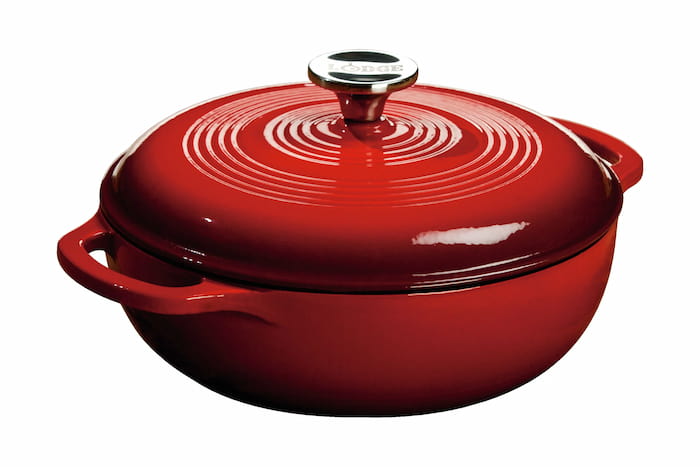
First off, the Lodge Cast Iron Dutch Oven is a 5-quart pot that can hold a whole, 4-pound chicken or 16 cups of soup. It works well to feed families of four and can roast, simmer, broil, braises, or bake a variety of meats, vegetables, and bread.
It is necessary to preheat the oven for at least 5 minutes before cooking in order to get the most out of the Lodge Dutch Oven. It has been pre-seasoned with oil to make it non-stick, and its non-stick properties will get better with use.
This oven’s cast iron construction enables exceptional durability and even heat distribution. When camping or cooking outside by a fire, this oven would be the ideal option. Never use soap and water to clean it because doing so can cause rust.
This oven’s red silicone handles are an added feature. These fit over the loop handles and make it possible to handle the hot oven safely and easily.
Le Creuset French Oven
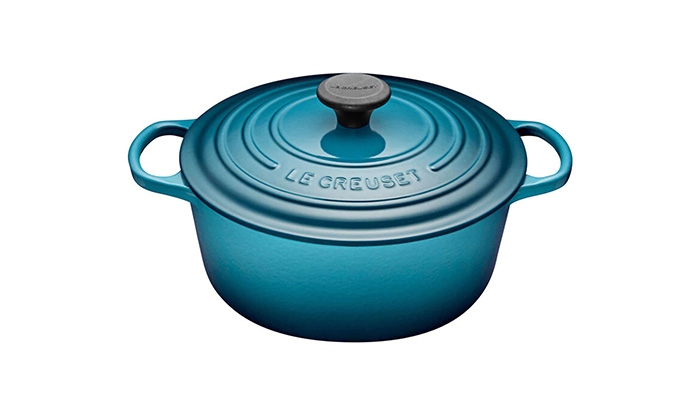
The Le Creuset Enameled Cast Iron Dutch Oven, on the other hand, is available. It has 5.5 quarts, which makes it slightly larger than the Lodge Dutch Oven, and it’s available in a variety of gorgeous, chip-resistant colors like pink, teal, red, and light blue. The interior of the Le Creuset French Oven is also enameled in taupe.
The size of this enameled Dutch oven or French oven is ideal for everyday cooking. It can easily feed a family of four to six, frequently with leftovers. As a general rule, one quart of liquid-based foods like soups and stews should be served to each person. In addition, this French oven can bake a standard loaf of bread and cook a whole 5-pound chicken.
The Le Creuset French Oven is dishwasher safe, which makes cleanup after a meal simpler than with the Lodge Dutch Oven. If at all possible, wash it by hand to increase its lifespan.
In my Le Creuset Guide, I have written about additional enameled cast iron cookware produced by Le Creuset.
Dutch Oven Vs French Oven Feature Comparison
After learning about the capabilities of each oven, let’s contrast the Le Creuset French Oven and Dutch Oven.
Lodge Dutch Oven
The 5 quart Lodge Dutch oven is a superb cooking vessel suitable for preparing a variety of dishes and recipes.
Pros
- Good for outdoor cooking
- Retains heat for long periods
- Cast iron won’t chip or crack like enamel
- Can feed up to 4 people
Cons
- Needs to be continually seasoned for non-stick capabilities
- Requires handwashing
- Must be preheated before use
Le Creuset French Oven
The 5.5 quart Le Creuset French oven has its own set of advantages and disadvantages that you should take into account despite being similar in shape and function.
Pros
- Comes in bright, attractive colors
- Make excellent serving dishes
- Enamel coating makes them dishwasher safe and easy to clean
- Comes pre-seasoned
- Can feed 4-6 people
Cons
- Enamel will chip or crack over time
- Cannot be used to cook over a campfire
- Doesn’t retain heat
Dutch Oven Vs. French Oven: Which Is Better?
Cast iron Dutch ovens, also known as French ovens, can be used almost interchangeably whether they are raw or enameled. However, there are some distinctions, so it’s crucial to think about how you plan to use the Dutch oven when choosing your cookware.
- These two pots are strong and well-built, and they both work well for cooking.
- They’re a good option for those who want to cook healthfully and with the least amount of effort possible. It all comes down to preparation and letting the Dutch oven or French oven handle the rest.
- There aren’t many differences between what you can cook in a Dutch oven and a French oven. They can both be used in the oven and on the stovetop to prepare a wide range of foods.
- However, a Dutch oven that isn’t enameled can only be used over a campfire. Also not heat-resistant are French ovens! So, if you are into camping and open fire cooking, the double Dutch oven is your best bet. If not, consider whether regular seasoning and a little more time spent maintaining your pot are acceptable to you.
We hope that provides you with some insight as you choose your next investment in cooking.
Read about
![Dutch Oven Vs French Oven Which One Should You Get [With Reviews]](https://www.searchforbuy.com/wp-content/uploads/2022/11/Dutch-Oven-Vs-French-Oven-Which-One-Should-You-Get-With-Reviews-768x432.jpg)
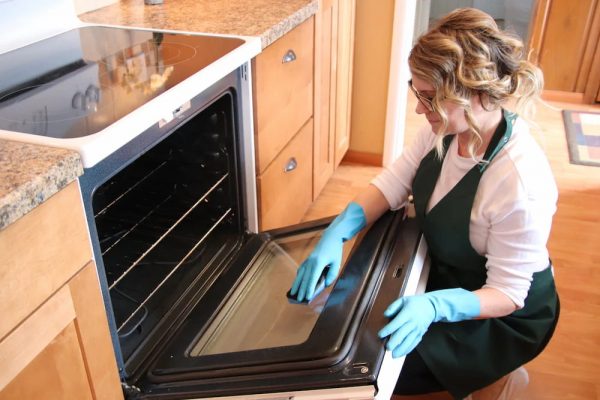
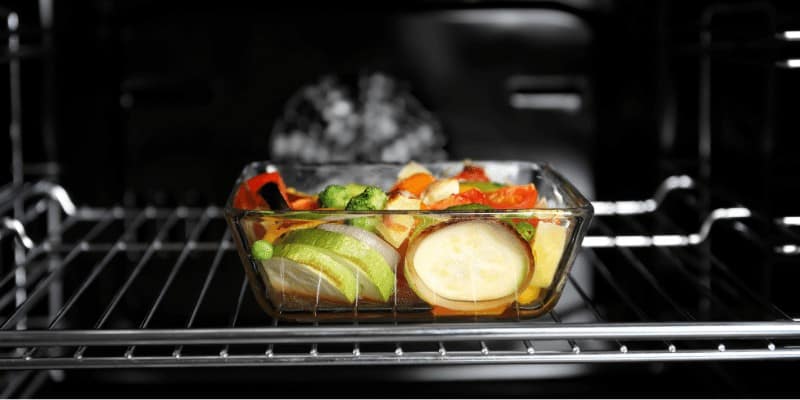
![Bella Air Fryers Reviews In 2022 [Updated]](https://www.searchforbuy.com/wp-content/uploads/2022/09/Bella-Air-Fryers-Reviews-In-2022-Updated-2.jpg)